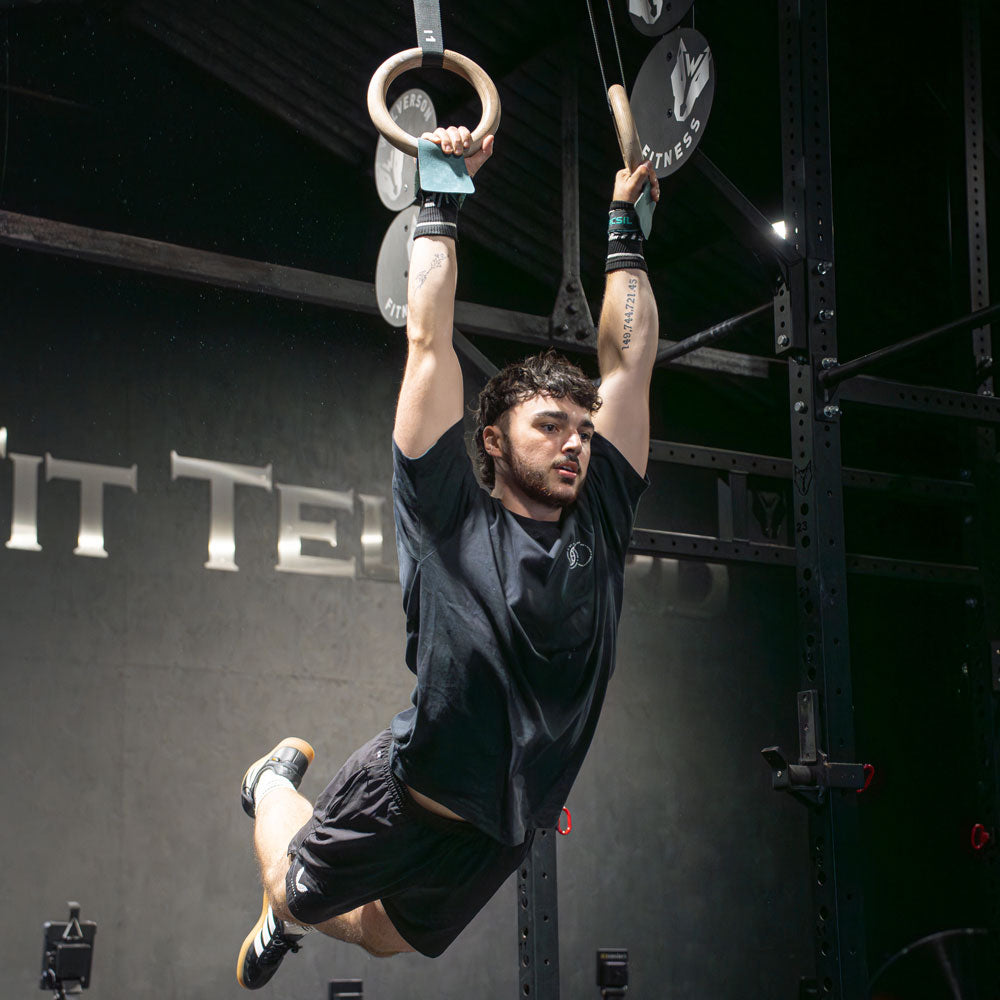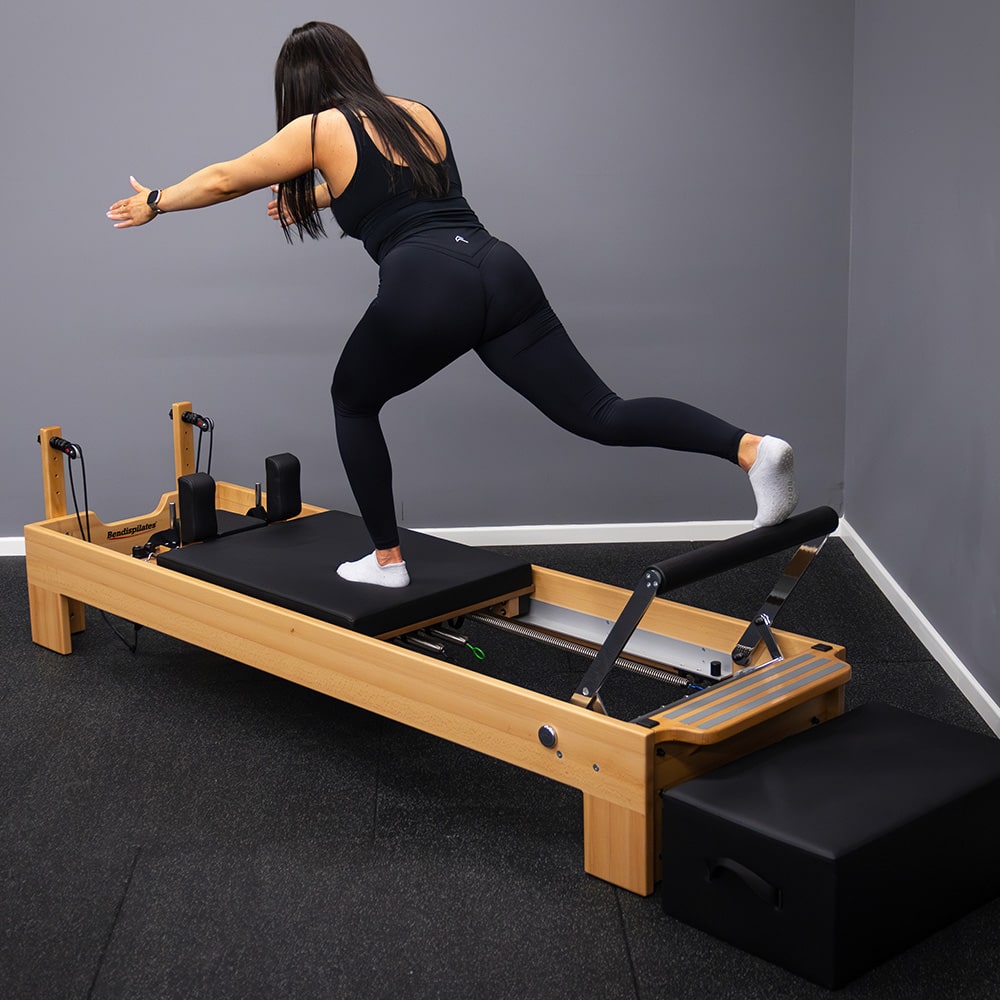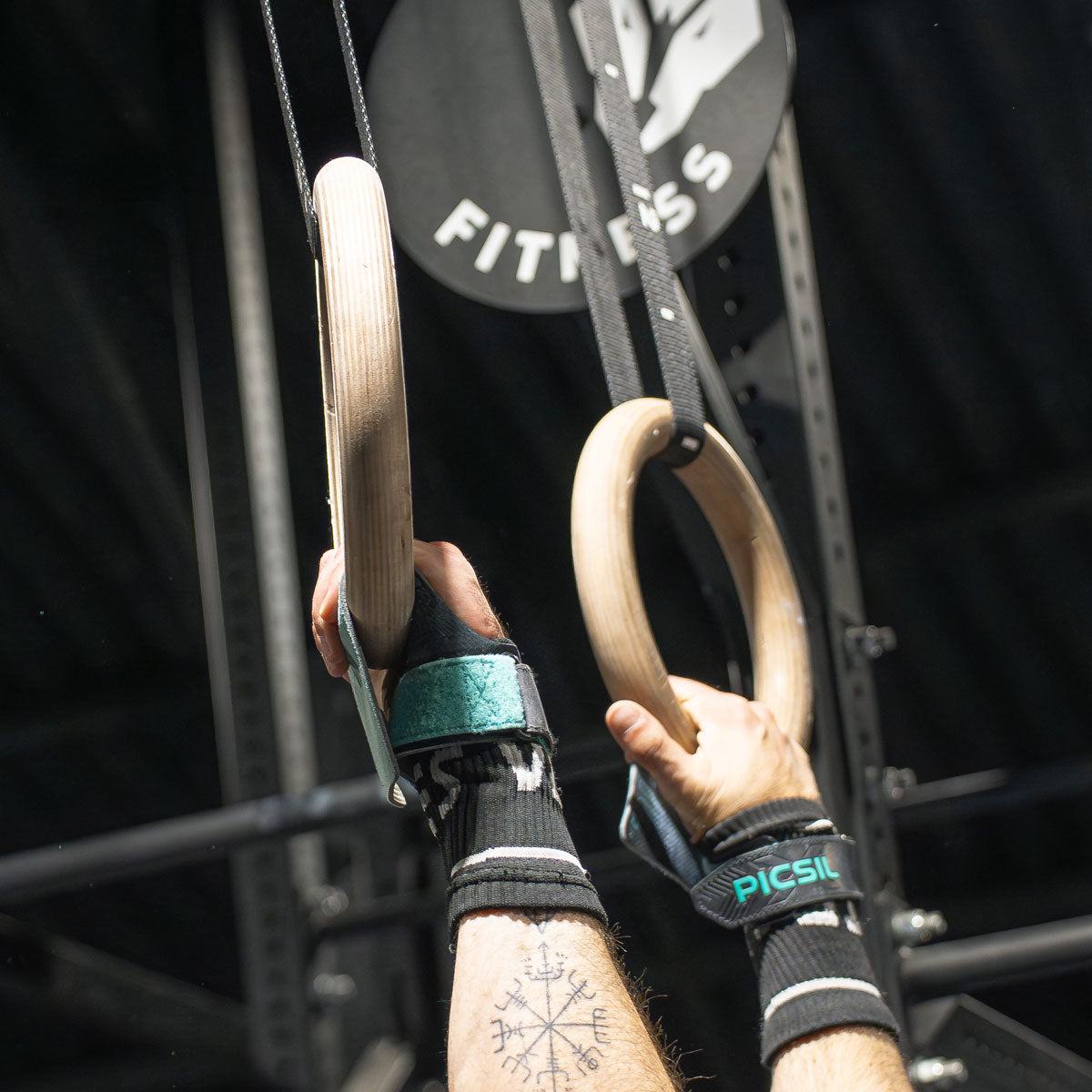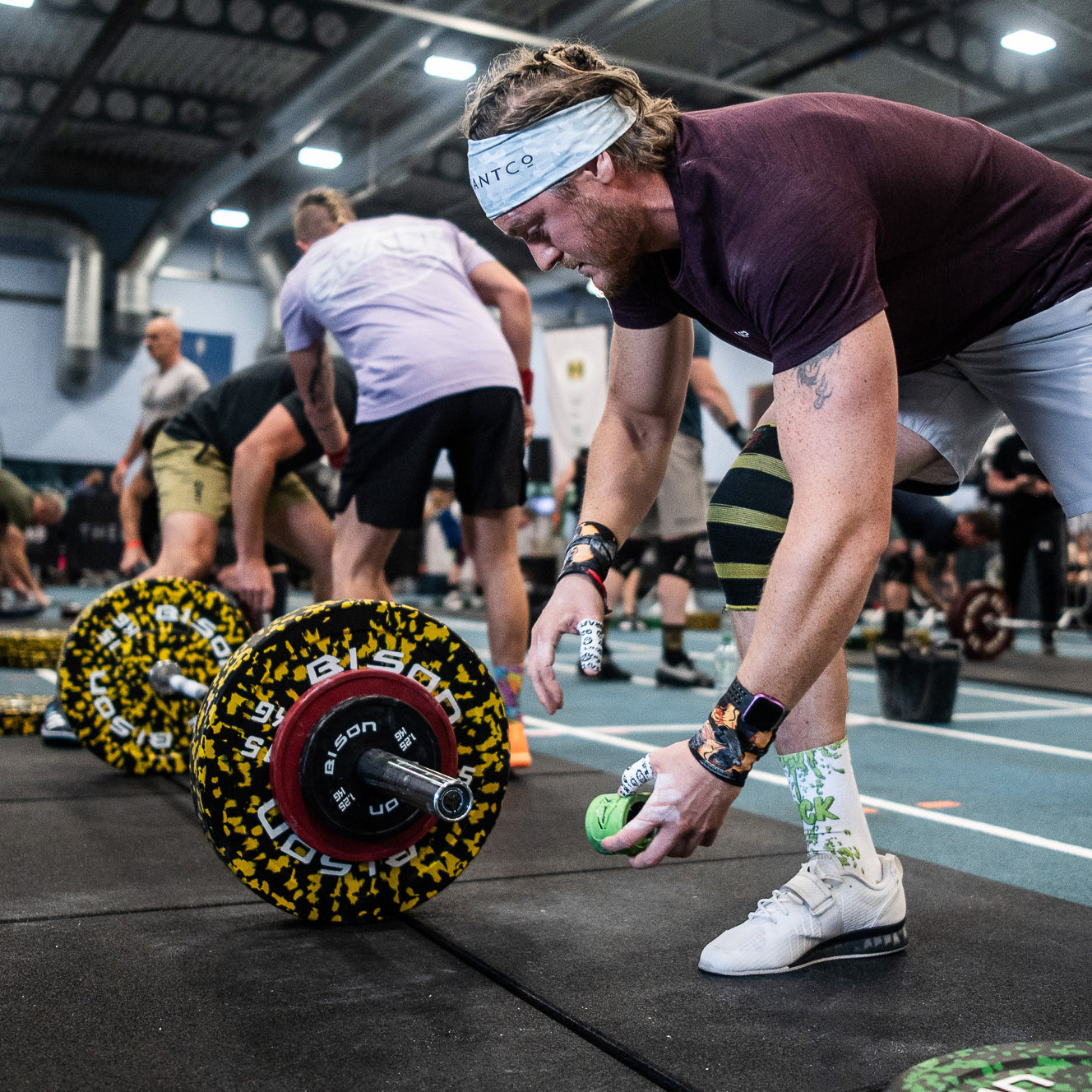Are you tired of workouts that feel complicated, equipment-heavy, or hard to stick with? Calisthenics might be the answer. At its core, it’s about mastering the control of your own body, building your functional strength skills, balance and mobility from wherever you train.
It’s also one of the biggest fitness trends right now, with over 3.7 million TikTok posts showing people transforming their bodies using the framework of bodyweight push and pull movements and a sprinkle of creativity.
In this article, discover what calisthenics is, the benefits of training with this style, and the equipment you can use to reach your goals quicker.

What is calisthenics?
Calisthenics is strength training stripped back to the basics, using only your bodyweight and gravity as resistance. If you think of movements like push-ups, pull-ups and squats, you’ve probably already included them in your plan, meaning you’ve touched calisthenics whether you realised or not. There’s also less emphasis on watching the kilograms of weight increase, and instead about how much control and stamina you have.
Not all bodyweight movements are calisthenics, though. Exercises like yoga, running and dancing, while often not including any equipment, aren’t resistance related.
The word itself comes from the Greek ‘kallos’ and ‘sthenos’, meaning beauty and strength, which captures the essence of this fitness style: controlled, graceful movements that make you stronger, more resilient and composed through athleticism and mindful muscle connection.
You have complete autonomy over whether you want to practice calisthenics, too, as it can be done anywhere, with or without equipment. You’re not restricted by your access to a specific machine, and you can go from training in your spare room to the gym or even in parks and outdoor fitness spaces.
Note, whenever starting a new training style, we recommend consulting a fitness professional, like a personal trainer, to advise you on form, technique and injury prevention.

How is calisthenics different from pilates?
While both are structured around bodyweight exercises and mindful movements, pilates is low-impact and focuses on flexibility and posture, whereas calisthenics aims to build endurance and fitness through improving your strength.
As long as you’re meeting the NHS-recommended 150 minutes of moderate activity a week, and enjoying your chosen style of training, you’re already smashing it. Calisthenics can be one of the simplest ways to contribute to those minutes, while also relieving stress, reducing anxiety and improving your mood through endorphin release and mindfulness.
What are calisthenics exercises?
Some foundational calisthenic movements include:
- Squats – Fire up your quads, hamstrings and glutes while strengthening your core.
- Push-ups – From knees to diamond variations, they’re scalable for all abilities while building pressing strength.
- Pull-ups – One of the biggest tests of upper-body control, hitting your lats, arms and core.
- Wall sits – Build lower-body stability and mental grit by lasting as long as you can.
- Tricep dips – Not isolated only to triceps, as you can strengthen your chest and shoulders, too.
- Leg raises – A killer core move that develops grip strength and endurance.
These common moves not only build muscle over time, they also improve your ability to go through your daily routine avoiding achy joints and supporting your functional fitness by tightening your coordination and control. By adjusting tempo, reps and form variations, you can make them as accessible or as challenging as you like.
However, as you progress, your focus may shift toward developing style and flair within your calisthenic routines, smoothly transitioning from one hold to another. More advanced calisthenic movements you may aspire to include:

- Handstand push ups - testing your balance and upper body strength, it’s the ultimate test of vertical control.
- Muscle ups - if pull ups aren't enough, try pushing your entire chest over the bar before lowing back down with control.
- Pistol squats - one for the lower body, this single leg squat variation not only challenges your strength, but it also relies on your balance and hamstring flexibility.
- Planche push ups - upgrade your push ups by hovering your feet above the ground to increase your core and upper body strength.
- V-sit - level up your L-sit, by folding your body into a V-shape whilst hovering above the floor. A real test of core strength and flexibility.
If you’re looking to see advanced calisthenics in action or get some inspiration, discover the array on talent flooding our social media feeds. Some popular calisthenics athletes include Frank Medrano, Taylor (littletfitness) and Andry Strong.
What are the benefits of calisthenics exercises?
The biggest benefit of calisthenics is its accessibility. Anyone can start, at any stage of their lives. You don’t necessarily need to start with any equipment or a gym membership, and you’ll still see results after consistent output. But beyond this, calisthenics helps:
- Improve mobility and coordination to reduce injury risk and boost athletic performance.
- Build lean muscle without heavy weights.
- Develop a stronger mind-body connection through controlled movement.
- Add variety to your workout routine to make your training enjoyable and sustainable.
Whether you’re a regular at the gym, a sportsperson, or you prefer to work out at home, calisthenics can be integrated into your training split however you like. However, it’s worth noting some calisthenics exercises may not be beginner-friendly as some advanced moves carry injury risk without proper progression. This is also why using high-quality and expertly manufactured equipment is crucial to reduce the likelihood of hindering your progress and hurting yourself.
At Wolverson Fitness, we can tailor your home gym or commercial gym to your goals and recommend the best products to complement your training style.

Can you train calisthenics and weights at the same time?
It doesn’t have to be calisthenics or weights, the two training styles complement each other. Calisthenics builds balance, coordination and control, while weight training adds progressive overload and targeted isolation.
Both are types of strength training, and weights provide the resistance, such as cable machines, kettlebells and barbells. But you can still achieve muscle growth with calisthenic movements, later adapting them with weight, as they’re the backbone of compound movements.
Weight training with free weights or machines may help you isolate certain areas more efficiently, but a versatile training plan that includes calisthenics definitely complements the definition you may be trying to build.
How do you start calisthenics?
If you’re just starting to train calisthenics, it’s recommended you take the same approach as you would with any new training style – with a solid plan and consistency. For instance, psychologist and researcher, Gabriele Oettingen, designed the WOOP process: Wish, Outcome, Obstacle and Plan, to help define what success looks like for you and how to work through the stresses and plateaus of exercise.
Many beginners find their first attempts at exercises like pull-ups or ring muscle-ups can take weeks, if not, months of consistent practice. But it’s also recommended that you don’t incorporate too much into your fitness plan.
Research from Sheffield Hallam University highlights that without the balance of rest and recovery between sessions, you could end up reducing your physical performance, losing your motivation to exercise, and slowing your ability to recover. So, if you want to take up calisthenics training, refine your plan to allow your muscles to repair properly.
You also don’t need a gym membership to take up calisthenics, as you can do it at home or in public parks, but many gyms like RFA Gym have included rings and a rope climb to expand their equipment for people interested in trying trending fitness styles without the need to buy their equipment own at home.
Essential calisthenics strength training equipment
While calisthenics can be done anywhere, the right equipment can help you progress more quickly. If you want to train at home, this type of equipment is not something you want to compromise on. The same goes for if you’re a gym owner looking to refresh your space, like CrossFit Disruption did. You want to invest in quality, long-lasting equipment that can consistently endure even the toughest of workouts.
Making informed choices is important to avoid frustration and injury, which is why, at Wolverson Fitness, we design our fitness equipment with you and your client’s goals in mind.
Equipment you can use to accelerate your strength goals with calisthenics includes:
- Dip bar
- Pull-up bar
- Resistance bands
- Yoga mat
- Weight belt
- Weight vest
- Yoga blocks
- Wrist wraps
- Kettlebells
- Ab wheel
- Skipping rope
- Gymnastic rings
- Parallettes
- Plyo box tower
How can Wolverson Fitness help with your calisthenics journey?
If you’re ready to take your calisthenics journey further, Wolverson Fitness has the tools to help both individual athletes and commercial gyms. Explore our range of equipment to enhance your bodyweight training, or design your dream gym setup with our 3D gym builder.
